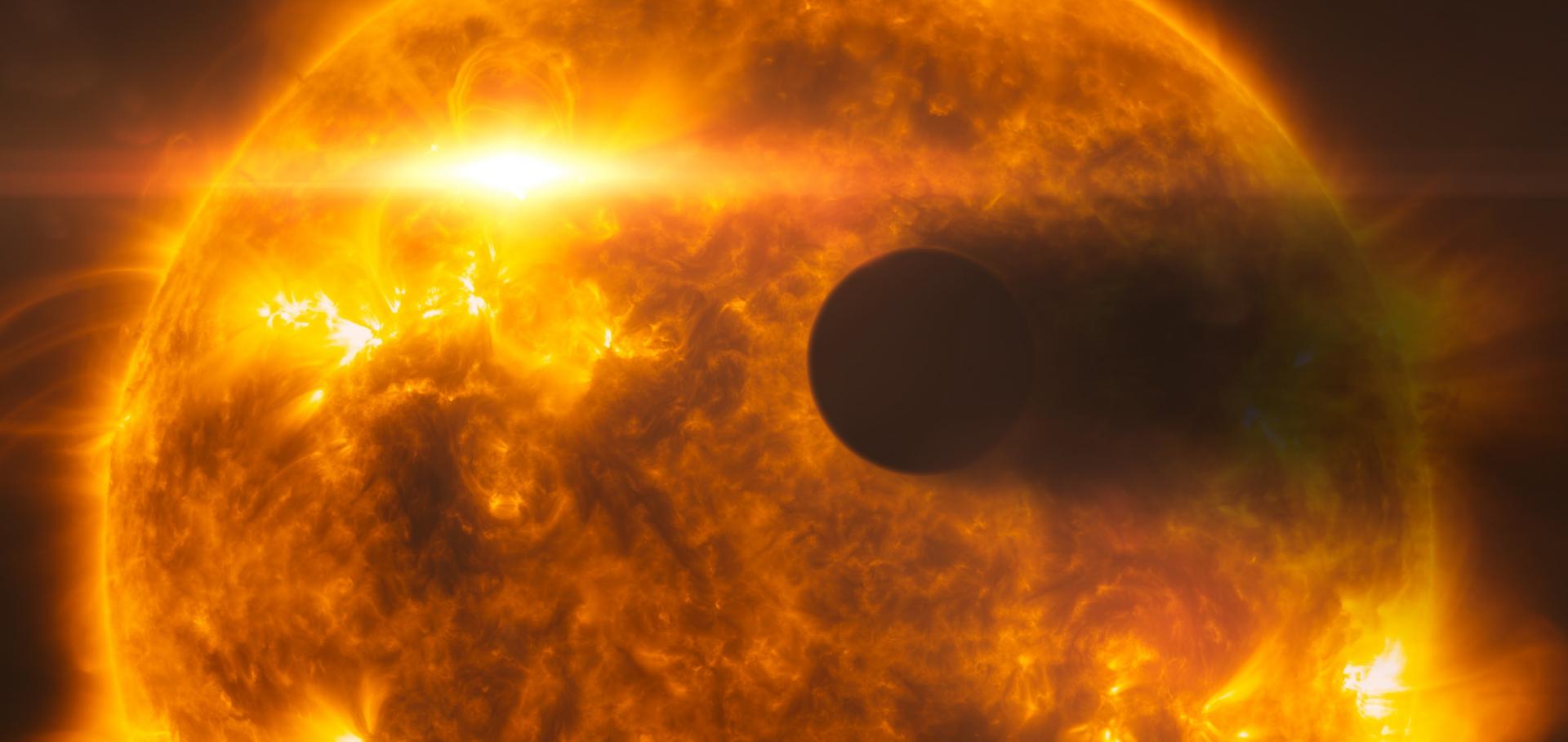Transit timing analysis of CoRoT-1b: (Research Note)
Astronomy and Astrophysics 510:1 (2010)
Abstract:
Context: CoRoT, the pioneer space-based transit search, steadily provides thousands of high-precision light curves with continuous time sampling over periods of up to 5 months. The transits of a planet perturbed by an additional object are not strictly periodic. By studying the transit timing variations (TTVs), additional objects can be detected in the system. Aims: A transit timing analysis of CoRoT-1b is carried out to constrain the existence of additional planets in the system. Methods: We used data obtained by an improved version of the CoRoT data pipeline (version 2.0). Individual transits were fitted to determine the mid-transit times, and we analyzed the derived O-C diagram. N-body integrations were used to place limits on secondary planets. Results: No periodic timing variations with a period shorter than the observational window (55 days) are found. The presence of an Earth-mass Trojan is not likely. A planet of mass greater than ∼1 Earth mass can be ruled out by the present data if the object is in a 2:1 (exterior) mean motion resonance with CoRoT-1b. Considering initially circular orbits: (i) super-Earths (less than 10 Earthmasses) are excluded for periods less than about 3.5 days; (ii) Saturn-like planets can be ruled out for periods less than about 5 days; (iii) Jupiter-like planets should have a minimum orbital period of about 6.5 days. © 2010 ESO.Transiting exoplanets from the CoRoT space mission. XIV. CoRoT-11b: a transiting massive “hot-Jupiter” in a prograde orbit around a rapidly rotating F-type star
åp 524 (2010) A55-A55
Photospheric activity, rotation, and star-planet interaction of the planet-hosting star CoRoT-6
Astronomy and Astrophysics 525:1 (2010)
Abstract:
Context. The CoRoT satellite has recently discovered a hot Jupiter that transits across the disc of a F9 main-sequence star called CoRoT-6 with a period of 8.886 days. Aims. We model the photospheric activity of the star and use the maps of the active regions to study stellar differential rotation and the star-planet interaction. Methods. We apply a maximum entropy spot model to fit the optical modulation as observed by CoRoT during a uninterrupted interval of ~ 140 days. Photospheric active regions are assumed to consist of spots and faculae in a fixed proportion with solar-like contrasts. Results. Individual active regions have lifetimes up to 30-40 days. Most of them form and decay within five active longitudes whose different migration rates are attributed to the stellar differential rotation for which a lower limit of ΔΩ/Ω = 0.12 ± 0.02 is obtained. Several active regions show a maximum of activity at a longitude lagging the subplanetary point by ~ 200° with the probability of a chance occurrence being smaller than 1 percent. Conclusions. Our spot modelling indicates that the photospheric activity of CoRoT-6 could be partially modulated by some kind of star-planet magnetic interaction, while an interaction related to tides is highly unlikely because of the weakness of the tidal force. © 2010 ESO.Possible detection of phase changes from the non-transiting planet HD 46375b by CoRoT
(2010)
Transiting exoplanets from the CoRoT space mission: XIII. CoRoT-13b: A dense hot Jupiter in transit around a star with solar metallicity and super-solar lithium content
Astronomy and Astrophysics 522:8 (2010)


